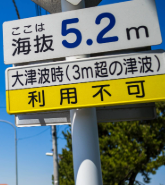The Groningen gas field, discovered in 1959, is the largest in Europe and produces up to 15 per cent of the natural gas consumed across the continent. With original reserves of more than 100 trillion cubic feet, over the decades the field has been an extraordinary cash cow for the Dutch government and the two global energy giants, Shell and ExxonMobil, which partner in managing the field. In 2014 alone, state proceeds from Groningen were approximately €9.4 billion ($9.8 billion).
But now, costs to the Dutch government are mounting as the courts have ordered that compensation is paid to nearby propery owners for damage caused by the earthquakes induced by extracting the gas. Insurers who were covering liabilities at the field now find that the claims have the potential to extend beyond the direct shaking damage to include the reduction in property values caused by this ongoing seismic crisis. And the potential for future earthquakes and their related damages has not disappeared – a situation which again illustrates the importance of modeling the risk costs of liability coverages, a new capability on which RMS is partnering with its sister company Praedicat.
The Groningen gas reservoir covers 700 square miles and, uniquely among giant gas fields worldwide, it is located beneath a well-populated and developed region. The buildings in this region, which half a million people live and work in, are not earthquake resistant: 90% of properties are made from unreinforced masonry (URM).
The ground above the gas field has been subsiding as the gas has vented out from the 10,000-feet deep porous sandstone reservoir and the formation has compacted. This compaction helps squeeze the gas out of reservoir, but has also led to movement on pre-existing faults that are present throughout the sandstone layer, a small number of which are more regional in extent. And these sudden fault movements radiate earthquake vibrations.
How A Shake Became a Seismic Crisis
The first earthquake recorded at the field was in December 1991 with a magnitude of 2.4. The largest to date was in August 2012 with a magnitude of 3.6. In most parts of the world, such an earthquake would not have significant consequences, but on account of the shallow depth of the quake, thick soils and poor quality building construction in the Groningen area, there were more than 30,000 claims for property damage, dwarfing the total number from the previous two decades.
Since the start of 2014 the government has limited gas production in an attempt to manage the earthquakes. But the ongoing seismicity has had a catastrophic effect on the property market, which has been compounded by a class-action lawsuit in 2015. It was filed on behalf of 900 homeowners and 12 housing co-operatives who had seen the value of their properties plummet. The judge ruled that owners of the real estate should be compensated for loss of their property’s market value, even when the property was not up for sale. The case is still rumbling on through the appeal courts but if the earlier ruling stands, then the estimates of the future liabilities for damage and loss of property value range from €6.5 billion to €30 billion.
Calculating the Risk
While earthquakes associated with gas and oil extraction are known from other fields worldwide, the massive financial risk at Groningen reflects the intersection of a moderate level of seismicity with a huge concentration of exposed value and very weak buildings. And although limiting production since 2014 has reduced the seismicity, there still remains the potential for further highly damaging earthquakes.
Calculating these risk costs requires a fully probabilistic assessment of the expected seismicity, across the full range of potential magnitudes and their annual probabilities. Each event in the simulation can be modeled using locally-calibrated ground motion data as well as expected property vulnerabilities, based on previous experience from the 2012 earthquake.
There is also the question of how far beyond actual physical damage the liabilities have the potential to extend and where future earthquakes can affect house values. The situation at Groningen, where it took almost thirty years of production before the earthquakes began, highlights the need for detailed risk analysis of all energy liability insurance covers for gas and oil extraction.






